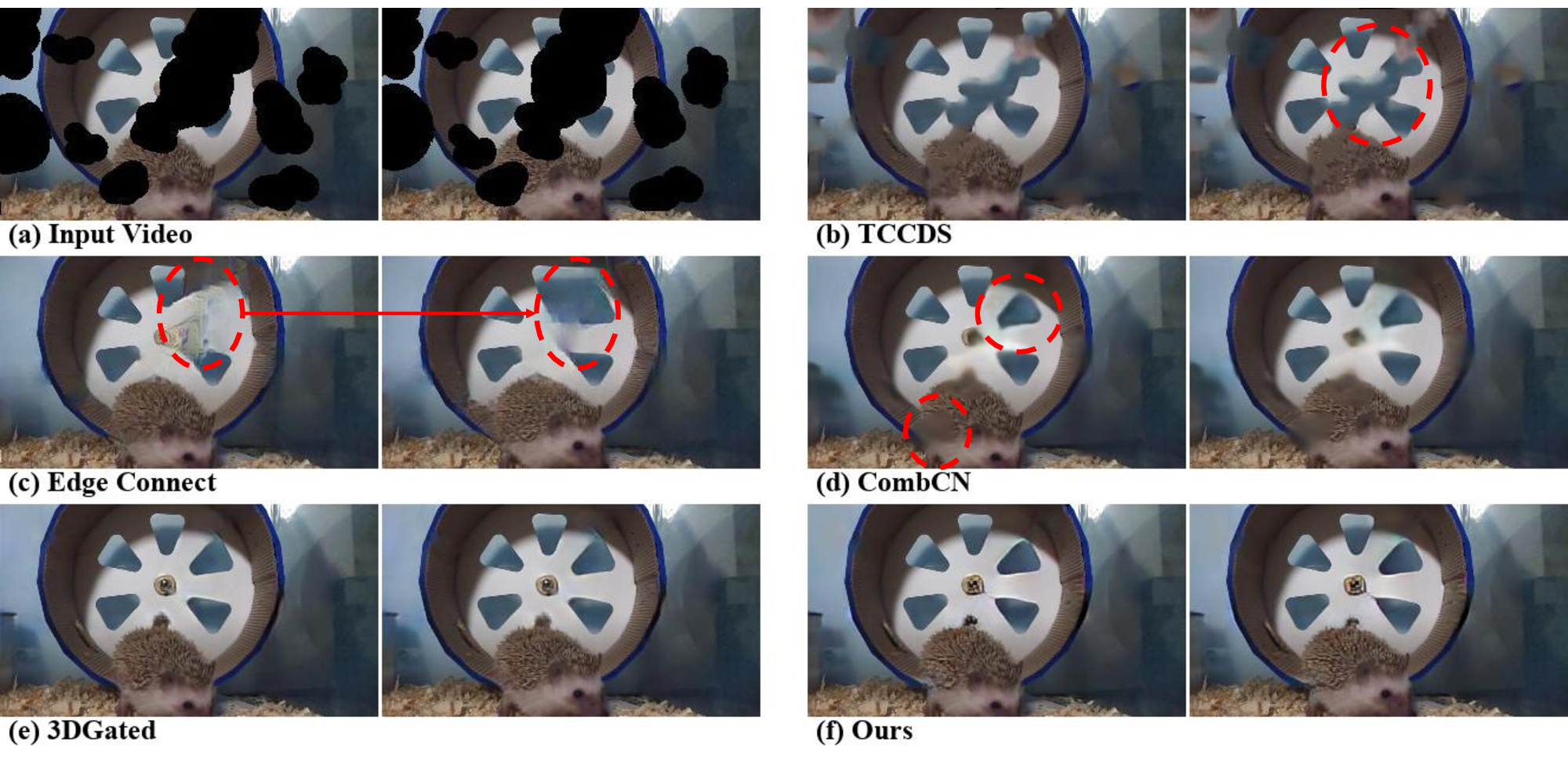Official Pytorch implementation of "Learnable Gated Temporal Shift Module for Deep Video Inpainting. Chang et al. BMVC 2019." arXiv
This repository also includes the implementation of some baselines and the Free-form Video Inpainting (FVI) dataset in "Free-form Video Inpainting with 3D Gated Convolution and Temporal PatchGAN. Chang et al. ICCV 2019." arXiv
See YouTube video demo or full resolution videos on Google Drive
In "Free-form Video Inpainting with 3D Gated Convolution and Temporal PatchGAN. Chang et al. ICCV 2019.", we proposed 3D gated convolutions, Temporal PatchGAN and mask video generation algorithm to deal with free-form video inpainting in an end-to-end way. It is the first deep method for free-form video inpainting and achieves state-of-the-art performance both quantitatively and qualitatively. However, there are too many parameters for 3D gated convolutions and it takes long to train and inference.
Therefore, in "Learnable Gated Temporal Shift Module for Deep Video Inpainting. Chang et al. BMVC 2019.", we proposed a new LGTSM based on temporal shift module (TSM) for action recognition to reduce model parameters and training time to about 33%. The performance is almost the same as our previous work.
This repository contains source code for both works. Some pretrained weights for the GTSM one are given, while the LGTSM code could be found in the LGTSM branch. The pretrained weights of the 3DGated model is not available now due to some compatibility issues. The implementation of the baseline CombCN is also provided.
git clone git@github.com:amjltc295/Free-Form-Video-Inpainting.git
cd Free-Form-Video-Inpainting
git submodule update --init --recursive
conda env create -f environment.yaml
source activate free_form_video_inpainting
Please see training
- Download corresponding pretrained weights from Google Drive
- Update parameters in
src/other_configs/inference_example.json:- If you want to test on other data, set
root_masks_dirfor testing masks androot_videos_dirfor testing frames. - If you want to turn on evaluation, set
evaluate_scoretotrue.
- If you want to test on other data, set
- Run
python train.py -r <pretrained_weight_path> --dataset_config other_configs/inference_example.json -od test_outputs
Then, you should have a directory src/test_outputs/ like:
test_outputs
└── epoch_0
├── test_object_like
│ ├── inputs
│ │ └── input_0000
│ └── result_0000
└── test_object_removal
├── inputs
│ └── input_0000
└── result_0000
The following GIFs show the figures that will appear in
(top row) test_object_like/result_0000, test_object_like/inputs/result_0000,
(bottom row) test_object_removal/result_0000, test_object_removal/inputs/result_0000
This repository is limited to research purpose. For any commercial usage, please contact us.
Ya-Liang Chang (Allen) amjltc295 yaliangchang@cmlab.csie.ntu.edu.tw
Zhe-Yu Liu Nash2325138 zhe2325138@cmlab.csie.ntu.edu.tw
Please cite our papers if you use this repo in your research:
@article{chang2019free,
title={Free-form Video Inpainting with 3D Gated Convolution and Temporal PatchGAN},
author={Chang, Ya-Liang and Liu, Zhe Yu and Lee, Kuan-Ying and Hsu, Winston},
journal={In Proceedings of the International Conference on Computer Vision (ICCV)},
year={2019}
}
@article{chang2019learnable,
title={Learnable Gated Temporal Shift Module for Deep Video Inpainting"},
author={Chang, Ya-Liang and Liu, Zhe Yu and Lee, Kuan-Ying and Hsu, Winston},
journal={BMVC},
year={2019}
}
This work was supported in part by the Ministry of Science and Technology, Taiwan, under Grant MOST 108-2634-F-002-004. We also benefit from the NVIDIA grants and the DGX-1 AI Supercomputer. We are grateful to the National Center for High-performance Computing.








